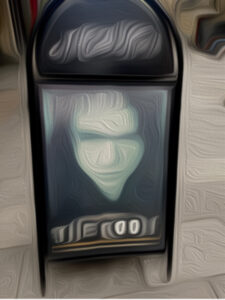
Many people would consider Tommy Wiseau’s 2003 film The Room as the absolute worst film of all time. With it’s horrible editing, unnecessary sex scenes that are way too long, out of focus filming, untrained acting, and an inability to ever close the door when someone leaves a room, there is a strong case for The Room. But all of the qualities that serve to discredit it, simultaneously make it a crowd favourite and cult classic.
Cult classics are films that are in some way transgressive, marginal, disasters or drawn from genres such as horror, science fiction, and exploitation, yet, which attract an exceptionally devoted and vocal fan base. Cult classics are defined by their audiences, and the love such audiences have for the films. Cult classics could even be described as extreme cinephilia. Wiseau’s chaotic energy, conspiracy theories surrounding the movie, combined with the cult following, and midnight showings have served to keep The Room not only alive, but thriving as one of the greatest American stories of friendship, betrayal, and relationships.
Wiseau the Enigma
Tommy Wiseau is without a doubt one of the strangest men of all time; he not only wrote the book on which The Room is based , but he wrote the screenplay, directed, produced and starred in the film himself. Wiseau is one of the main drivers of The Room – his personality makes him a fan favorite and his eccentric pre-screening Q&As are infamous. Wiseau is weird, he has never given the world any answers about The Room, or ever revealed where he is from, yet he is incredibly likable. He gives off such a confident but lost presence that everyone constantly questions whether or not he is joking. Wiseau serves as a perfect front man for this wildly erratic film, as his chaotic energy is confusing and exciting, perfectly matching the film.
One of the greatest mysteries that surrounds this film is how Tommy Wiseau was able to find a 6 million dollar budget for this disaster film, and also fund a billboard in Los Angeles for years (estimated to cost several hundred thousands). Fans have drawn many conclusions on their own, adding to the film’s cult status. Some believe Wiseau was part of the mafia, and this film was a distraction from mafia business; others believe he is D.B. Cooper, the infamous missing plane hijacker who escaped a flight over Oregon in the 70s with $200,000. Wiseau himself claims he funded it by selling leather jackets. Fans have used his lack of detail to create their own theories of how he was able to fund this film and why he wanted it in the first place. This cult ideology surrounding Wiseau culminated with The Disaster Artist, the 2017 James Franco film that details Wiseau’s journey with The Room.
Cult Experience: No Kool Aid Required
The Room’s cult following makes attending a midnight showing the only correct way to experience the film. If you haven’t seen it by now, please find a theatre and see it. It is an experience you will never forget.
I saw The Room for the first time on December 30th 2017. Before then, I would shout ‘Oh hi Mark!’ whenever I saw friends on campus even though I hadn’t seen the movie in full yet. So I walked into the theatre with a full box of plastic spoons, ready to witness pure genius. The film is chaotic, with plenty of continuity issues. The best parts about being in the audience are: throwing spoons at the screen every time you see a strange artwork that is nearly always depicting a spoon, yelling ‘Goodbye Denny!’ every time Denny leaves the screen, the people who will get up and toss a football around to mirror the awkwardness of the screen and, screaming ‘close the door!’ each time a character leaves one open (nearly every scene).
There’s a lot of things that Room-goers tend to do to pass the time in the theatre, so if you’ve never been, be sure to bring your spoons and be ready for chaos. Also, bring alcohol – it is a necessary and sufficient condition to enjoy this film. The audience loves to interact with the film, showcasing the love of The Room’s disaster qualities and questionable techniques. Going to The Room means you’re part of the film. It’s a sing along where everyone is expected to do their part in the 91 minutes spent together. The experience of the film is embodied by the togetherness that the audience feels – they all love to hate it.
The Room is arguably one of the greatest disaster films and cult classics of all time. Its fans are dedicated cinephiles, having kept it relevant and in theatres across the United States for almost 20 years. Today, it’s even shown outside of the US, adding to its cult status. The Prince Charles cinema in London holds frequent showings. The film stays alive and as part of pop culture because it’s fun for the audience. Experiencing The Room is the embodiment of experiencing the love of film, people go because they love it and ultimately, they enjoy the experience.
Film in the cult classic world is about appreciating films for what they stand for, for their longevity, for their ability to create a community and even for their flaws. The love that the audiences have for these films is contagious so that you can’t help but acknowledge the pure passion and excitement when at midnight showings. Cult audiences aren’t particular – these films don’t have to be deep, they don’t have to be art house, and they don’t have to be box office hits. Their popularity comes wholly from their reception. The love for films, the viewing experience and the memory for obscure quotes keep the cult tradition alive.
Written for The Film Dispatch by Grace LaNasa.

